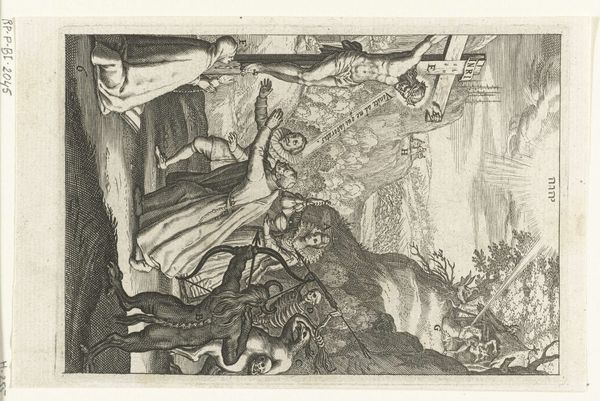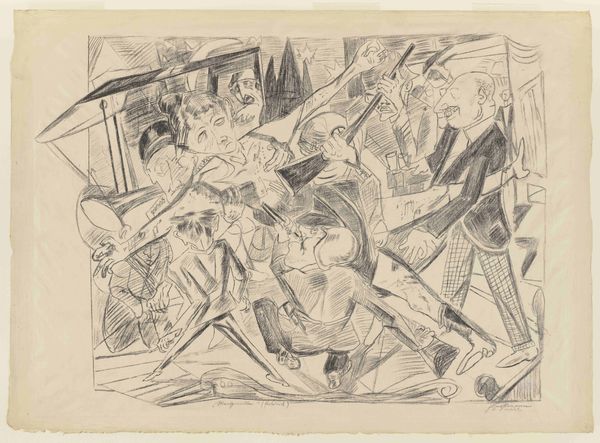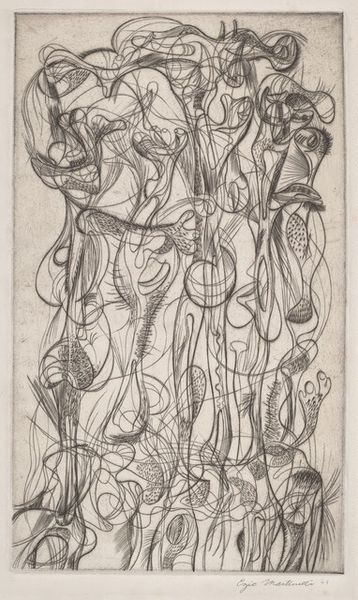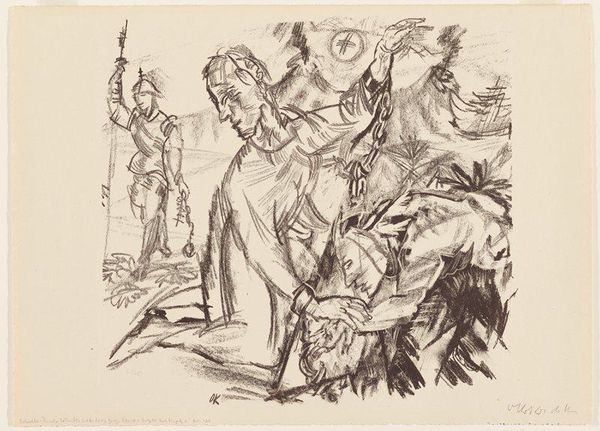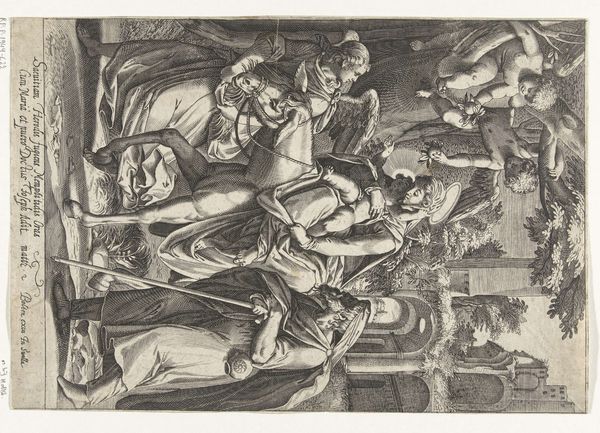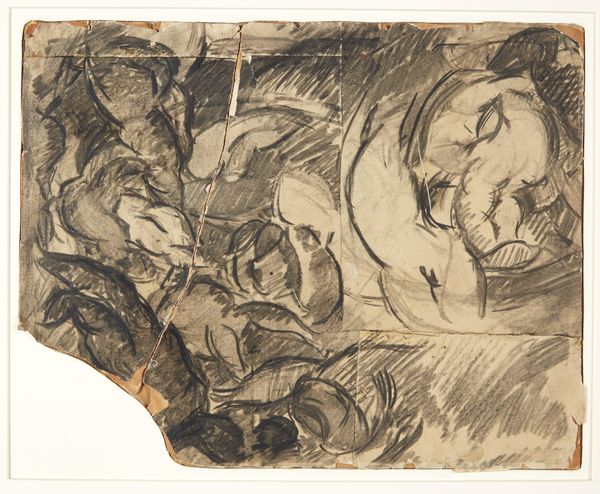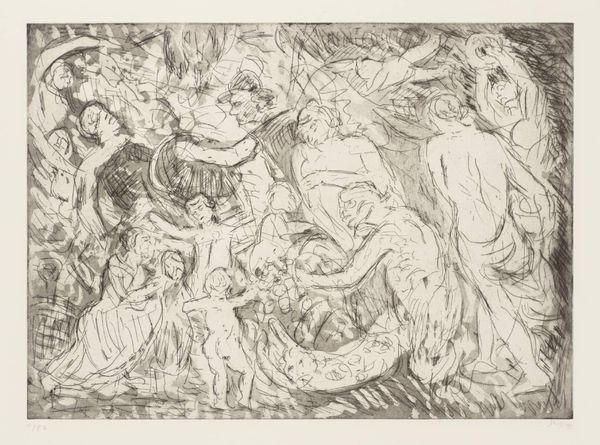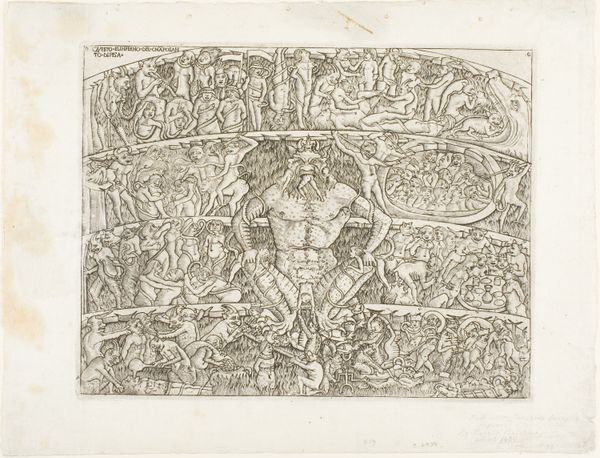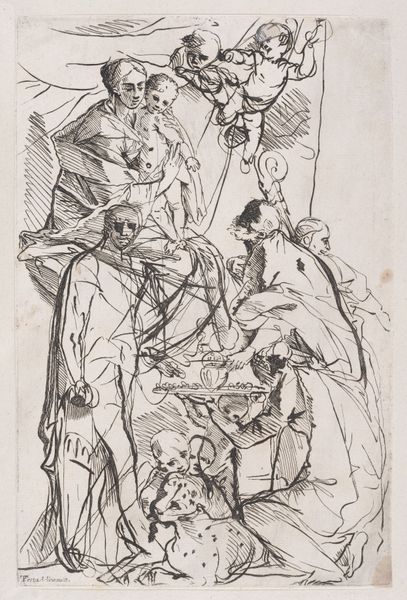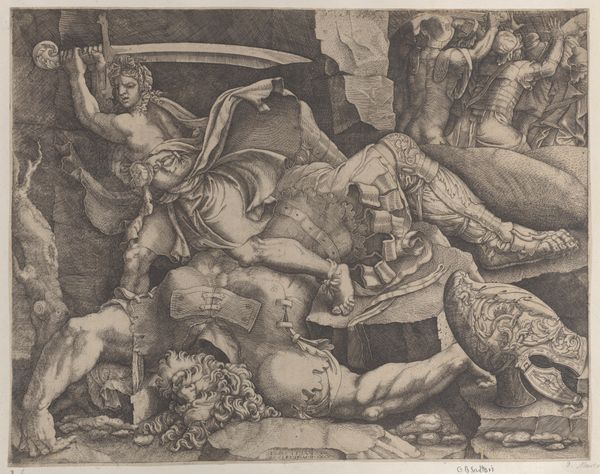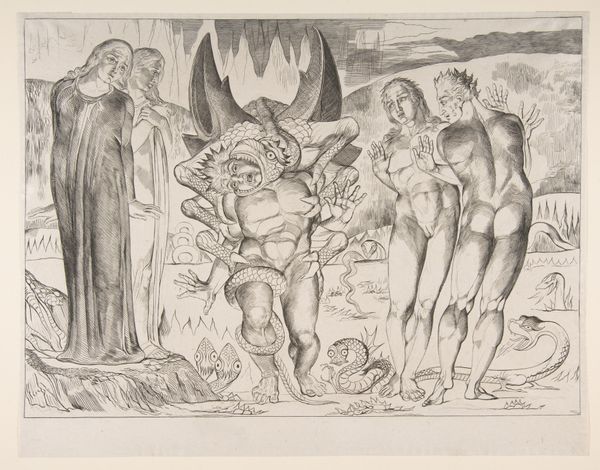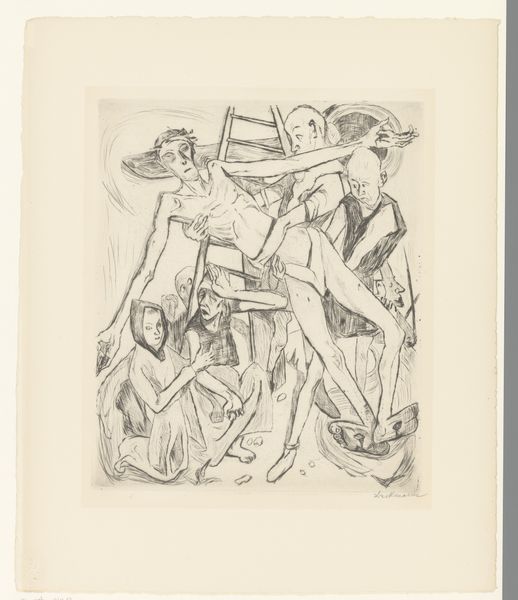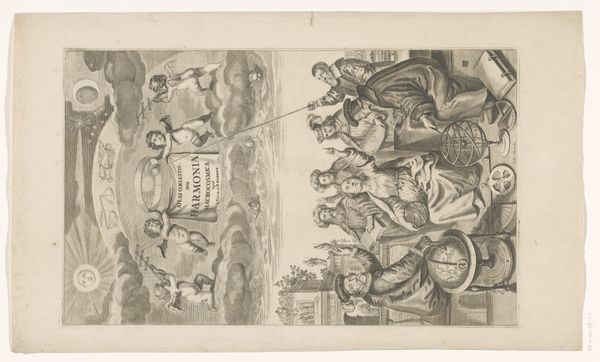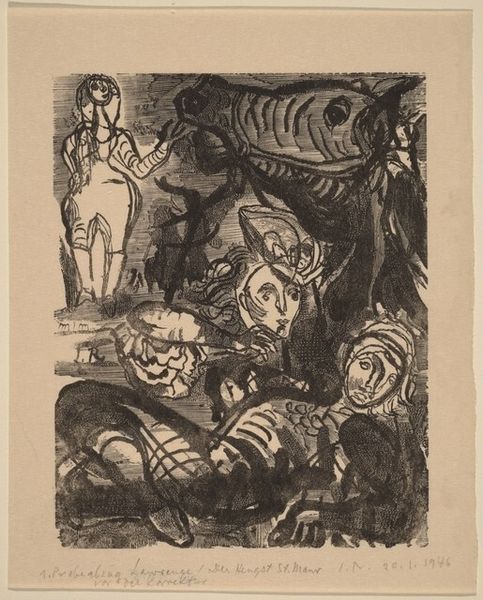
drawing, lithography, lithograph, ink
#
drawing
#
lithography
#
ink drawing
#
narrative-art
#
pen drawing
#
lithograph
#
german-expressionism
#
figuration
#
ink
#
expressionism
Copyright: Public Domain
Curator: Immediately, the jagged lines feel like shattered glass. The chaos is almost palpable. Editor: And we are certainly seeing that, viewing Max Beckmann's lithograph "Night, Sheet 6 from the series 'Hell'" created in 1919, presently held in the Städel Museum. Beckmann, a key figure in German Expressionism, executed this work in ink. The visual density surely speaks volumes. Curator: Volumes of what exactly? It feels like an interrogation, figures twisting and turning in a claustrophobic space. There's a brutality, certainly linked to his experiences in World War I, informing these intense and disturbing narratives. Editor: Well, war undoubtedly changed everything, didn’t it? The figure huddled in the corner—is that a child? The composition evokes earlier traditions in altarpieces or perhaps even Daumier's socio-political commentary, yet utterly eviscerated into a fragmented, post-war sensibility. Curator: Absolutely. The sharp, angular lines emphasize the figures' psychological states. Look at how the figures overlap; it feels impossible for anyone to escape this scene. He uses the figures to display emotional angst, rather than focusing on his masterful usage of lines and shapes. Editor: The almost caricature-like expressions definitely emphasize emotional turmoil; yet I do detect a wry, sardonic humour peeking through the terror—a touch of absurdism perhaps? And does the singular candle hint at enlightenment, hope amidst devastation, or just further heighten the dramatic contrasts? Curator: I think your interpretation certainly touches upon one facet. However, it's not necessarily a universal interpretation, as Beckmann leaves it up to his audience to dissect and deconstruct his artwork. Art critics, since his time, haven't been able to solidify his singular purpose. It leaves many of his artworks somewhat ambiguous. Editor: Perhaps the enduring power lies precisely in that ambiguity; this resistance to easy readings makes us confront uncomfortable realities even today. A haunting reminder materialized as art. Curator: I couldn’t agree more. It is through this nightmarish scenario that Beckmann successfully captures the disorientating mental and cultural disruption that occurred after WW1.
Comments
No comments
Be the first to comment and join the conversation on the ultimate creative platform.
